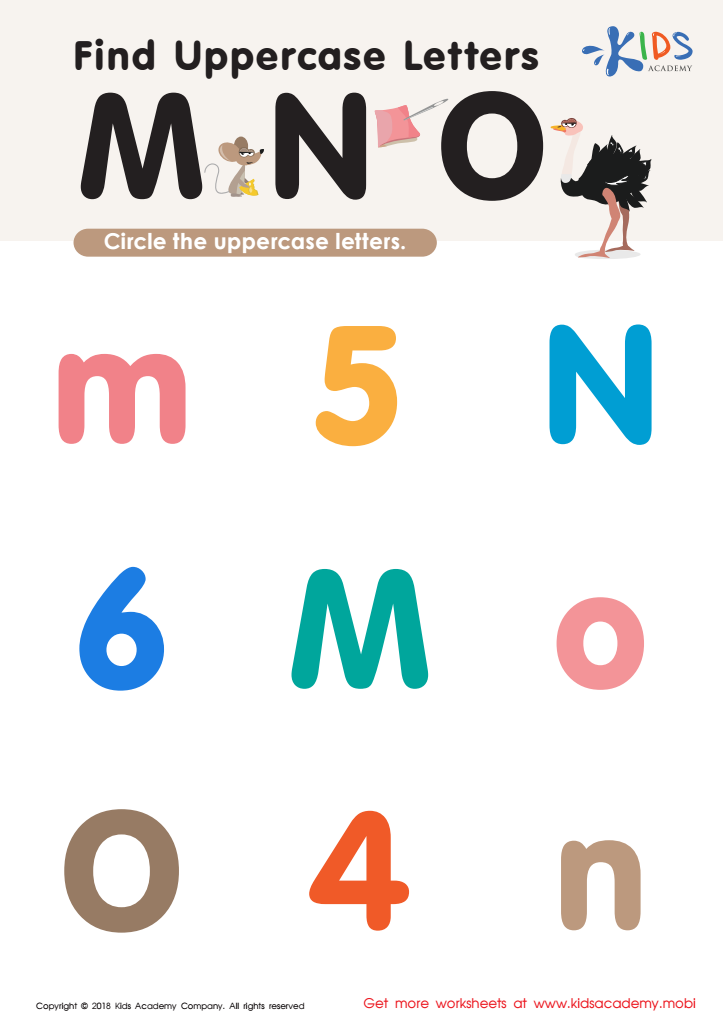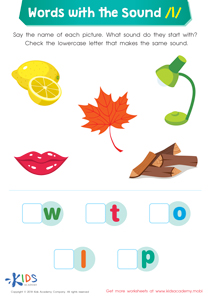Uppercase identification Uppercase Letters Worksheets for Ages 4-8
5 filtered results
-
From - To
Boost your child's literacy skills with our engaging Uppercase Identification Worksheets designed for ages 4-8. These worksheets make learning uppercase letters fun and interactive! Through a variety of activities, kids will practice recognizing, tracing, and writing uppercase letters in creative contexts. Perfect for preschool and early elementary education, our resources cater to diverse learning styles, ensuring that every child develops essential foundational skills. With clear illustrations and playful themes, these worksheets are ideal for homeschooling and classroom activities. Equip your little learners with the confidence and knowledge they need to excel in their reading journey. Explore our collection today!


Find Uppercase Letters Worksheet


Find Uppercase Letters J, K, and L Worksheet


Find Uppercase Letters A, B, and C Worksheet


Find Uppercase Letters V, W, X Worksheet


Find Uppercase Letters M, N, and O Worksheet
Uppercase letter identification is vital for young learners aged 4-8 as it serves as a foundation for literacy development. Understanding uppercase letters is crucial for several reasons. First, they are often the first letters children encounter in print, especially at the beginning of sentences and proper nouns. Proficient recognition helps children navigate text and fosters confidence in reading.
Second, uppercase letters play a key role in phonics instruction. Many children learn that uppercase letters consistently represent specific sounds, aiding in their ability to decode words. This skill contributes directly to their reading fluency and comprehension.
Moreover, identifying uppercase letters lays the groundwork for writing. As children learn to form letters, starting with uppercase letters can simplify the writing process since these letters are typically more straightforward in structure.
Parents and teachers should prioritize uppercase identification to promote positive literacy experiences. Engaging children with letter games, songs, and interactive activities makes learning fun and memorable. Strong early experiences with letter recognition can significantly impact long-term academic success, helping children become confident readers and effective communicators in their future schooling. Fostering an appreciation for letters at this age is an investment in their educational journey.
 Assign to My Students
Assign to My Students






















